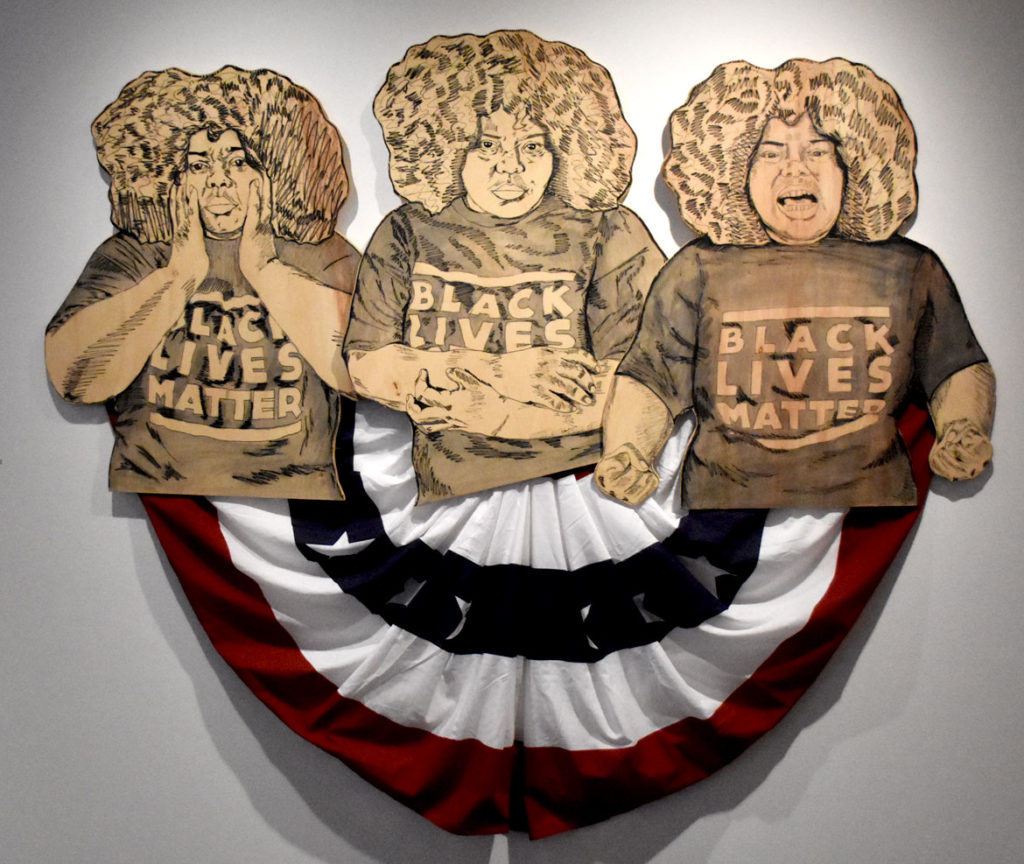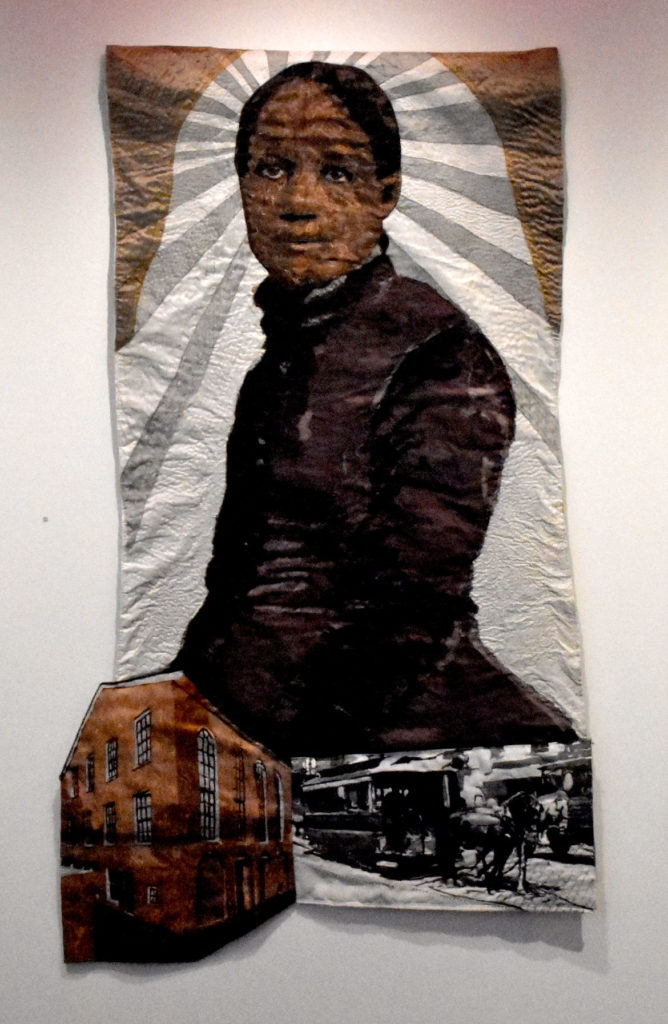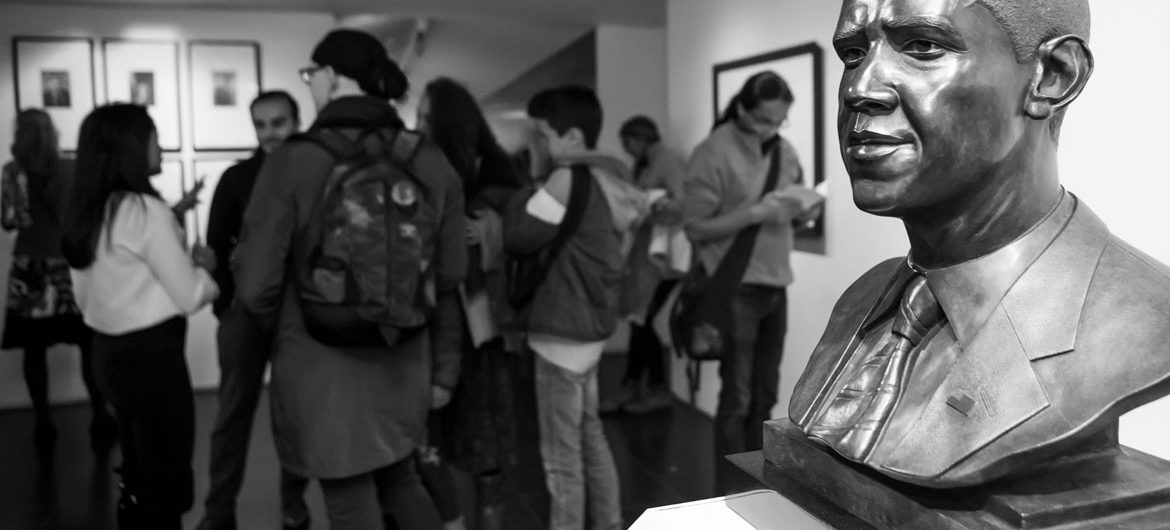Near the start of “Nine Moments for Now,” the riveting exhibition at the Cooper Gallery at Harvard University’s Hutchins Center in Cambridge through Jan. 21, is a hall of black and white photos of the dead.
The images depict funerals of assassinated civil rights leaders Martin Luther King, Malcolm X and Medgar Evers in the 1960s and funerals for African Americans killed by police in recent years: Sandra Bland, Michael Brown (“ground zero for what we now know as Black Lives Matter,” curator Dell Marie Hamilton says), Freddy Gray. Boston photographer Craig Bailey offers “Faces of the AIDS Crisis,” portraits of local activists in the 1990s who have since died from HIV or AIDS, Hamilton says. And Carrie Mae Weems’s 2008 photos from her “Constructing History Series” are pietas reimaging the deaths of Evers, King, Malcolm X. It is a halting, haunting place to begin—invocations of the African American community’s monumental losses.

“Nine Moments for Now” seems in part to be about how a people reckon with such losses. Hamilton says she included the AIDS portraits to consider “artists and activists and public figures working on the ground and how did they get through the crisis.”
“In the wake of #BlackLivesMatter and #TimesUp, we hope that this exhibition enables all of us to slow down long enough to remember that democracy, time and memory are as poetic, unruly and fragile as body and breath,” Hamilton, a Boston artist, writes in the exhibition booklet. She’ll lead tours of the show on Dec. 20 and Jan. 11.
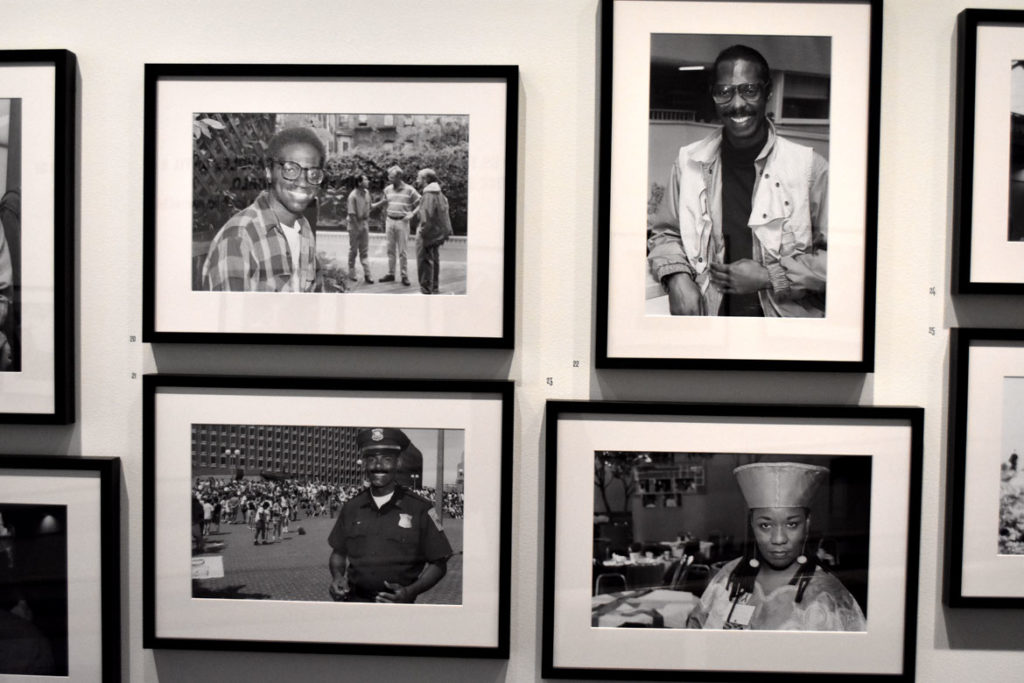
Help Wonderland keep producing our great coverage of local arts, cultures and activisms (and our great festivals) by contributing to Wonderland on Patreon. And sign up for our free, weekly newsletter so that you don’t miss any of our reporting.
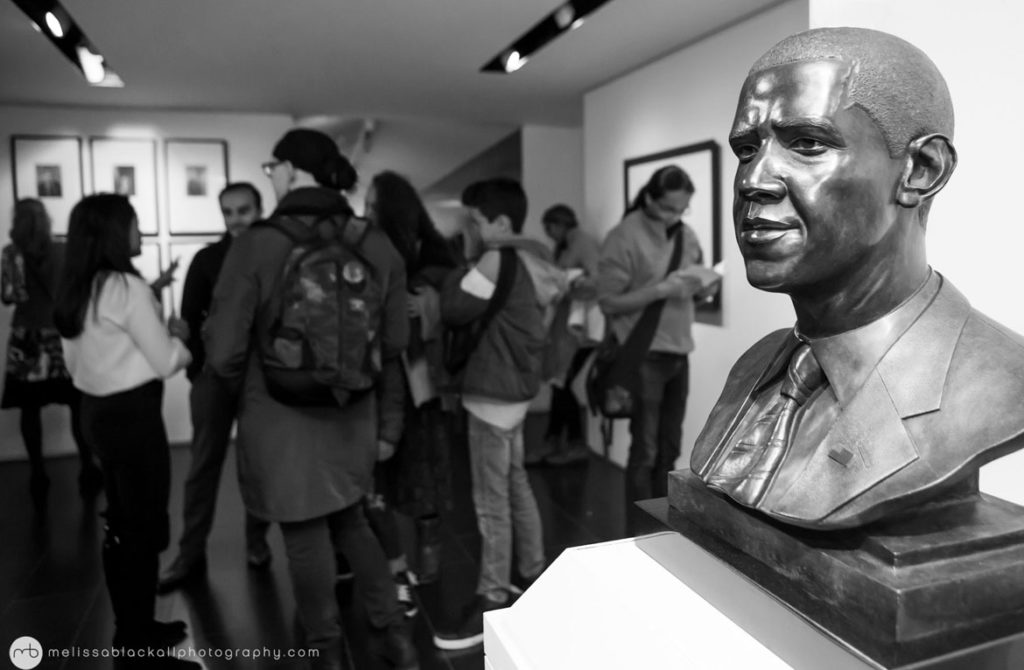
The exhibition begins with mourning then highlights heroes, family history, legacies, traditions and activism. At the end of that first hall of photos is a bronze bust of Barack Obama by Matthew Gonzalez that seems to contemplate all the death. Hamilton says the statue is “there as a sentry, reminding us we’re on the precipice, we can’t be complacent.”
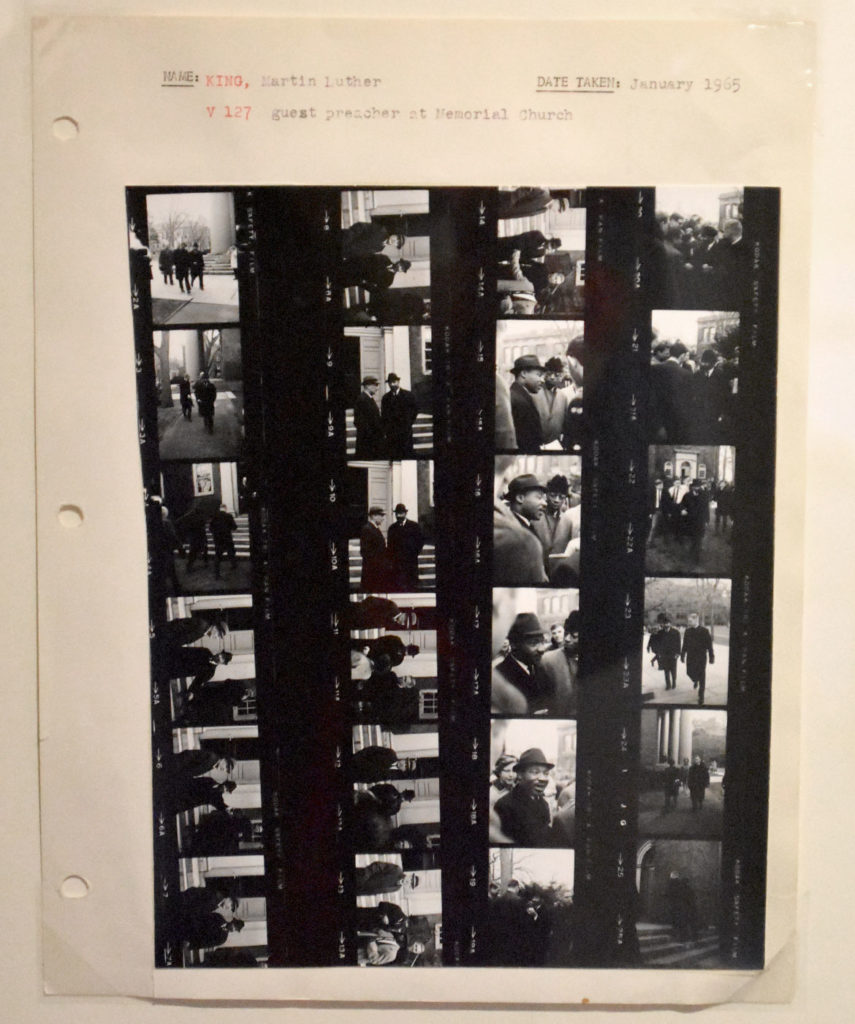
Obama is part of a section of heroes—W.E.B. Dubois’s Harvard student photo from 1890 (“before they were giants,” Hamilton says); Carl Van Vechten photos of stars of the Harlem Renaissance during the 1930s and ‘40s (James Baldwin, Zora Neale Hurston, Langston Hughes, Jacob Lawrence, Richard Wright, Alain Locke), Martin Luther King photographed during a 1965 visit to Harvard; a 1977 photo of writers Alice Walker, Toni Morrison and June Jordan from Jordan’s archive.

Next are posters—Shepard Fairey’s iconic graphics of Obama from the 2008 presidential campaign; screenprints from 1969 by Corita Kent (after she’d left Los Angeles for Boston) about black poverty, Cesar Chavez, and mourning the death of Martin Luther King; vintage posters promoting the Chicago black artists collective AfriCobra and calling for a black studies program at Harvard. There are Chinese propaganda posters from the early 1960s saying “US Imperialism Get Out of Africa” and “For Independence and Freedom,” as well as reproductions of posters from the 2016 Women’s March.
Maria Magdalena Campos-Pons’s installation of spears, African and Chinese stools, and blocks of sugar reference the African diaspora that has labored in the sugar plantations of her native Cuba. Tony Gleaton photographs African-descended people in Central America. “I want to open up the notion of blackness and how it is constructed,” Hamilton says. “It’s constantly in motion, it’s constantly being reconfigured.”

“Nine Moments for Now” showcases many Boston-area artists: Steve Locke’s “Auction Block” abstract paintings based on the shape of the locus of slave sales; Ekua Holmes’ shrines to family members; L’Merchie Frazier’s textiles honoring 19th century Boston activist Frances Ellen Watkins Harper and Black Panther Ericka Huggins; Joy Buolamwini’s “AI, Ain’t I a Woman,” a digital piece interrogating racism built into artificial “intelligence” programs. Other local folks in the show include Alexandra Smith, who teaches at Wellesley College; Elisa Hamilton; Evelyn Rydz; Marlon Forester; Chanel Thervil.
“What does winning look like?” Hamilton asks in the show’s brochure.
“The show is simply a proposition. It’s different ways of being an activist, different ways of being a citizen. It’s also about we’re in this thing, this project of America, we’re in this together,” Hamilton says. “There are ways each of us individually can make an impact. … We can’t rely on Washington to save us. It’s really about each of us individually and our own agency, what we can do in the here and now.”
Help Wonderland keep producing our great coverage of local arts, cultures and activisms (and our great festivals) by contributing to Wonderland on Patreon. And sign up for our free, weekly newsletter so that you don’t miss any of our reporting.
